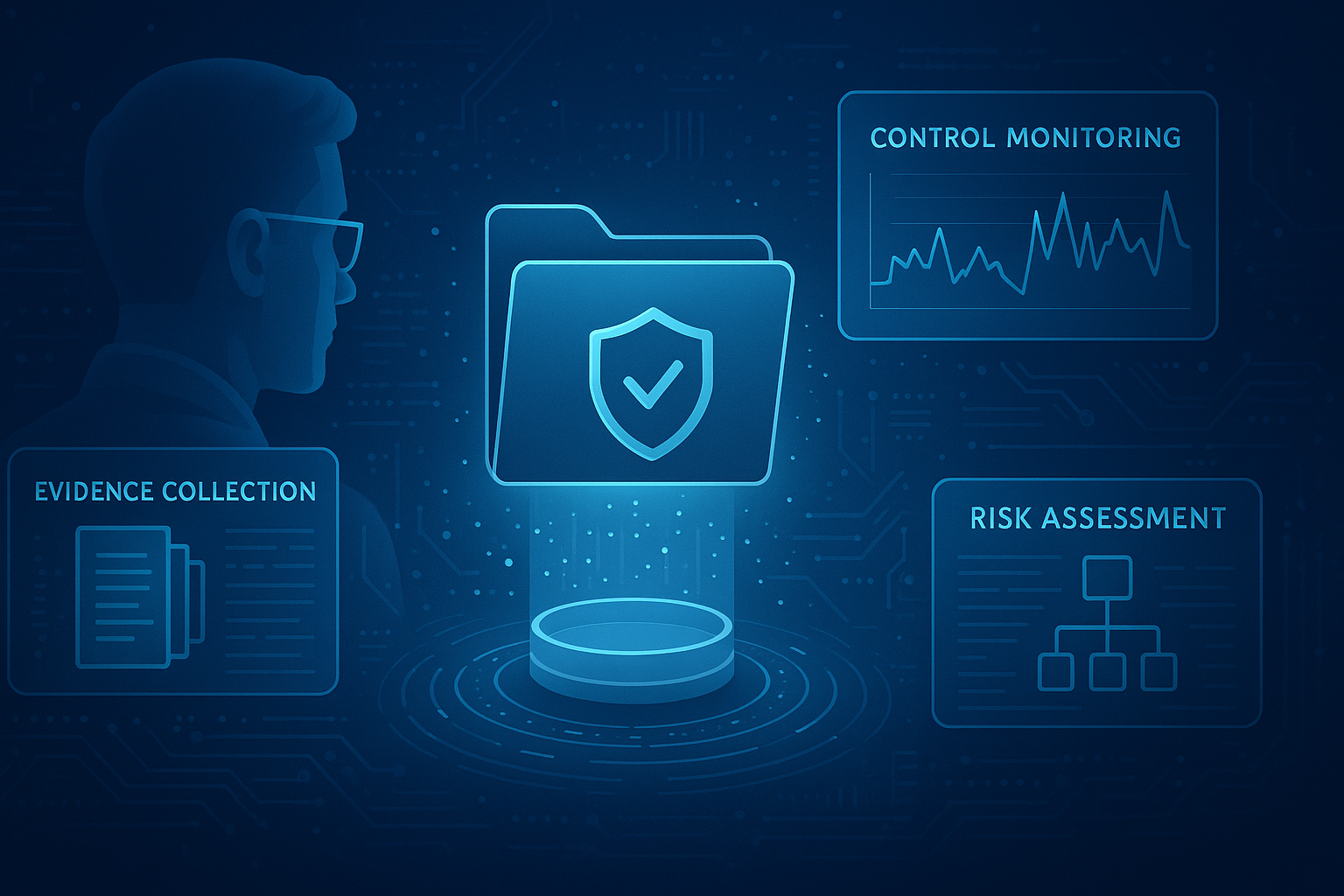Although the cybersecurity risk landscape has always been dynamic, the shift to remote work during the pandemic further accelerated massive changes and affected how an enterprise focuses on key risk and security services. In a pre-COVID survey by Harvard Business Review, survey respondents were asked what the CISO’s principal responsibilities should be in the next three years. 63% responded that they wanted to build an organization-wide cybersecurity culture. 47% responded they wanted to work with the risk management process to integrate cyber risk with a broader risk strategy.
Digital transformation has been a key issue for Boards of Directors for a while, but this focus on cyber practices and cyber risk is relatively new. Historically, security operations centers (SOCs) have been responsible for monitoring internal controls and incident responses to risk and defending the enterprise against security incidents. At its core, SOC risk management is a reactive approach to cybersecurity that waits for cyber threats to appear before dealing with them rather than security teams using security monitoring and security tools to anticipate where the threats will originate and monitor internal and external security controls. The current SOC model doesn’t support effective communication of threats, vulnerabilities, security information, and events to management or boardrooms.
ROCs vs. SOCs for Cyber Risk Management
Risk assessments to determine threats and vulnerabilities are typically conducted at intervals, whether once a year or every other year. Outside of this, most security analysts and professionals only respond to risk when a breach is detected, or a customer’s information has already been compromised. The downfall of this approach is that it doesn’t account for the continuous, ever-changing nature of risk. This irregular assessment audit schedule exposes institutions continuously to threats, especially since many cybersecurity programs are already underfunded and understaffed.
The C-suite is good at making decisions based on risk. Still, cybersecurity risk hardly ever gets communicated in a business context that encourages a narrative to get technical teams and executives on the same page regarding cybersecurity risk management programs. As the rise of digital transformation proliferates globally, cybersecurity initiatives that were once seen as a “nice to have” are becoming a “need to have” as the probability of threats rises in growing digital spaces. Information is the new currency, and customers trust an organization's security intelligence to ensure due diligence. When their data is compromised, so is that trust, affecting every organization’s bottom line.
So in comes risk operation centers (ROCs). Unlike the SOC, which takes a more reactive approach to cybersecurity, the ROC encompasses cyber and IT, focusing on proactive risk management programs, working with and aligning SOC analysts to analyze past vulnerabilities and improve mitigation. It can also be supported by technologies like artificial intelligence (AI) and machine learning (ML) to eliminate the need for human intervention in compliance and risk assessments. ROC supplemented with ML offers a broader monitoring solution that can anticipate more vulnerabilities.
The Impact of ROCs
ROCs allow for identifying the risks and provide risk intelligence and strategic insight. They also allow security team members to collaborate between the technical aspects of cyber risk management and business stakeholders. This isn’t feasible for a SOC team because they're reactive. Instead, they constantly respond to vulnerability concerns and are “in the weeds," trying to mitigate active threats instead of anticipating them.
The ROC measures impact, and likelihood, and tracks trending risks that CISOs can bring to the board or other executive members. Risk visualizations—often quantitative and qualitative–can be essential to ground a discussion around risk exposure. Understanding risk and the factors that go into assessing it is made much more intuitive through graphics that allow comparison and a quick financial reporting analysis. Risk visuals are essential to get to the “big picture” of the company's cyber risk posture. Platforms like CyberStrong can also present data analytics by vulnerability type and approach for remediation.
A permanent ROC center can also be supplemented by NLP-assisted threat detection monitoring that continuously assesses an enterprise’s assets and is ready to react proactively to cyber-attacks. Organizations that wait to establish a risk operations center after a breach or after an event has already occurred will lose critical data on risk intelligence, the opportunity to make effective decisions based on real-time information and have to build trust with their customers again.
Risk insights with a balance of quantitative and qualitative information are used for risk storytelling and communication, encouraging a cyber and risk-aware culture.
Wrapping Up
Keeping up with the dynamic landscape of risk management and global security requires more than GRC legacy systems and SOCs for cyber security. Organizations need an agile, responsive solution that monitors, alerts and responds to threats, not modular solutions that do not grow with the organization. It’s no longer enough to meet bare minimum compliance requirements. Enterprises need to create a system and a culture that act proactively on threat intelligence and effectively mitigate possible disruption.
For automation solutions and more on how CyberStrong can give you and your employees the ability to help transition your team to a ROC, contact us here. You can also register and watch our webinar about ROC-n-SOCs here.
Watch the Webinar





.png)
.png)
.png)
%201.png)
.png)




